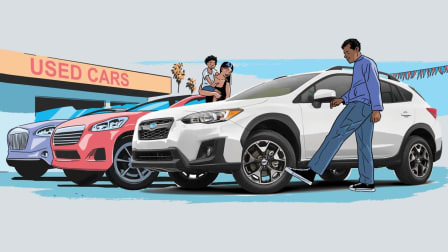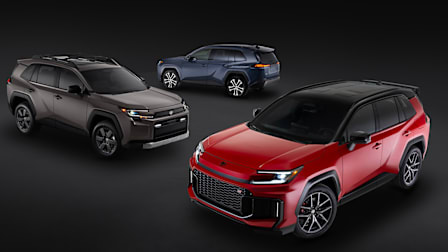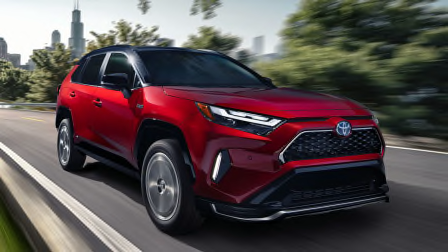First Drive: Toyota Mirai, the Hydrogen-Powered Luxury Cruiser
This second-generation fuel-cell car boasts impressive tech, but it has very limited practicality

Toyota may be a newcomer to pure electric cars, but it has decades of experience with hybrid and fuel-cell vehicles. Its Mirai is an electric car, but it uses fuel-cell technology to produce electricity from hydrogen and oxygen, rather than store electricity in a large battery.
The hydrogen interacts with oxygen from the outside air inside a stack of fuel cells and through a chemical reaction produces electricity. Water vapor is the only emission. There is only one other fuel-cell car on the market: The Hyundai Nexo. Both cars are available only in California.
@consumerreports Zero emissions? No need to be plugged in? 🤔 It takes a few minutes to fill the Mirai's tanks with hydrogen, as opposed to hours of charging for a typical electriccar. But the #ToyotaMirai is only available for sale in California because it's the only state with some form of hydrogen infrastructure. #cartok #carsoftiktok
♬ original sound - Consumer Reports
If you’re a Consumer Reports member, our expert assessment of the 2021 Toyota Mirai is available to you below. There is no difference between the 2021 and 2022 models.
If you haven’t signed up yet, click below and become a member to access this full article and all our exclusive ratings and reviews for each vehicle we buy and test. Joining also gives you full access to exclusive ratings for the other products our experts evaluate in several categories, including electronics and home appliances.
What We Rented
Toyota Mirai XLE
Powertrain: 182-hp electric motor, one-speed direct drive, rear-wheel drive
MSRP: $49,500
Options: 20-inch alloy wheels ($1,120)
Destination: $1,095
Total cost: $51,715 before the $7,500 tax credit and an additional $4,500 rebate from California.
Toyota Mirai Limited
Powertrain: 182-hp electric motor, one-speed direct drive, rear-wheel drive
MSRP: $66,000
Options: Advance Technology Package ($1,410); surround-view camera, front and rear parking assist with automatic braking.
Destination: $1,095
Total cost: $68,505 before the $7,500 tax credit and an additional $4,500 rebate from California.




















